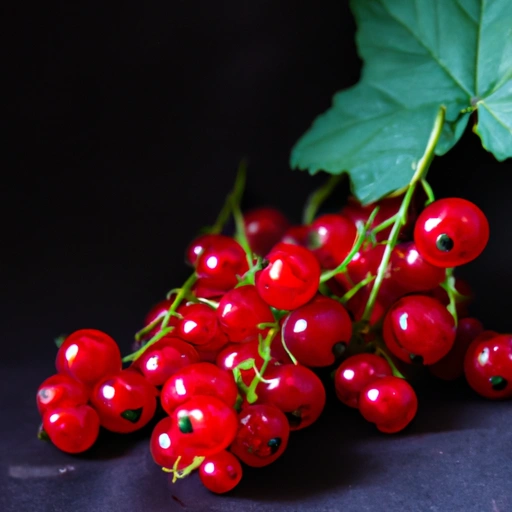Redcurrant
Description

Redcurrants are small, tart berries that are a rich red color when fully ripe. They belong to the genus Ribes and are closely related to blackcurrants and gooseberries. These berries are known for their balance of sweetness and acidity, making them a popular choice for a variety of culinary applications around the world. Redcurrants are often used fresh, dried, or processed into jellies, sauces, and preserves, and are cherished for their unique flavor profile and vibrant color which adds appeal to numerous dishes.
Common uses
Redcurrants are often used in sweet and savory dishes alike. They can be made into redcurrant jelly, which is a traditional accompaniment for lamb in British cuisine. In other European dishes, redcurrants are used in sauces, tarts, and desserts. They also make a refreshing addition to summer salads, cocktails, and are used as a garnish for various dishes.
Nutritional value
Calories
Redcurrants contain approximately 56 calories per 100 grams (3.5 ounces).
Protein
These berries offer about 1.4 grams of protein per 100 grams (3.5 ounces).
Fat
Redcurrants have a low-fat content with only 0.2 grams per 100 grams (3.5 ounces).
Carbohydrates
The carbohydrate content is around 13.8 grams per 100 grams (3.5 ounces), primarily from sugars and dietary fiber.
Vitamins
Redcurrants are an excellent source of vitamin C, providing about 41 milligrams per 100 grams (3.5 ounces), which is 68% of the Recommended Daily Intake (RDI).
Minerals
These berries also contain potassium, with around 275 milligrams per 100 grams (3.5 ounces), and are a good source of iron and magnesium.
Health benefits
Redcurrants are rich in antioxidants and have anti-inflammatory properties. They may contribute to a healthy immune system, aid digestion, and possibly reduce the risk of certain chronic diseases. The high vitamin C content is also beneficial for skin health and wound healing.
Potential risks
While redcurrants are generally safe to eat for most people, those who are on blood-thinning medications should monitor their intake due to the vitamin K content. Also, as with any fruit, overconsumption can lead to gastrointestinal discomfort due to the fiber content.
Common recipes
Common recipes include redcurrant jelly, tarts, muffins, compotes, and glazes for meats. Redcurrants are also used in fruit salads, smoothies, and as a topping for yogurt and ice cream.
Cooking methods
Redcurrants can be cooked down into sauces and jellies, baked into pastries, or simply eaten raw. They can also be dehydrated or used to infuse liquors and vinegars.
Pairing with other ingredients
The tart flavor of redcurrants pairs well with sweet and creamy ingredients such as vanilla, cream, and white chocolate. They also complement savory flavors like lamb, game meats, and robust cheeses.
Summary
Redcurrants are a versatile and nutritious ingredient that can enhance both sweet and savory dishes with their distinct tartness and vibrant color. They are valued for their health benefits and are used in various culinary traditions around the world. Whether incorporated into a sophisticated sauce or simply sprinkled over a dessert, redcurrants add a touch of elegance and a burst of flavor to any dish.